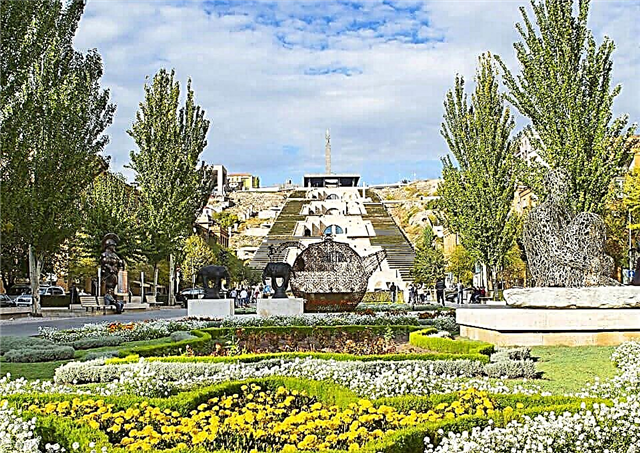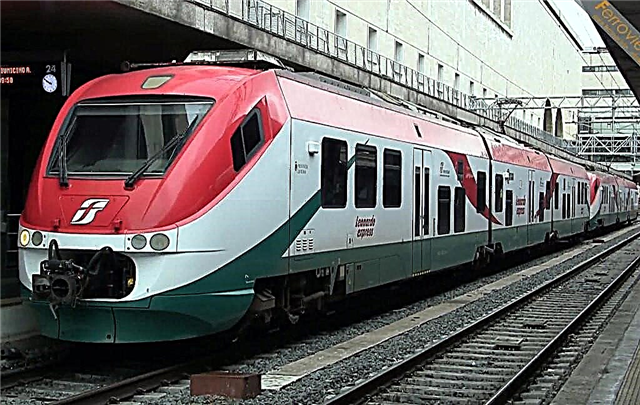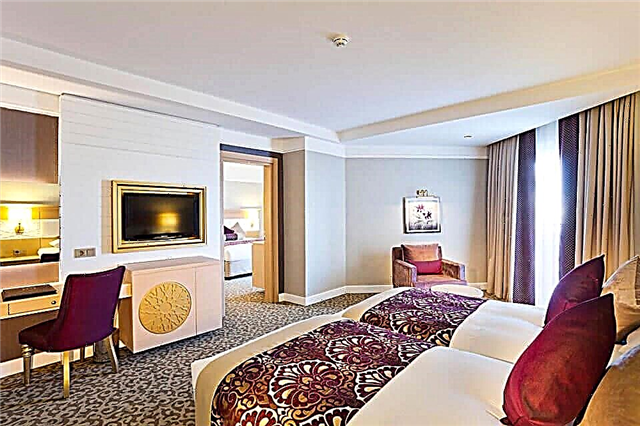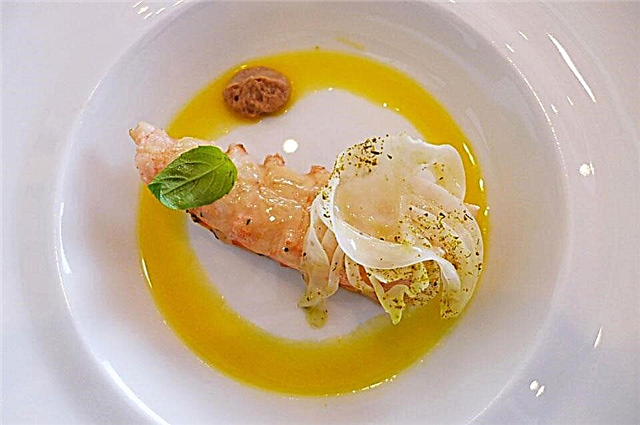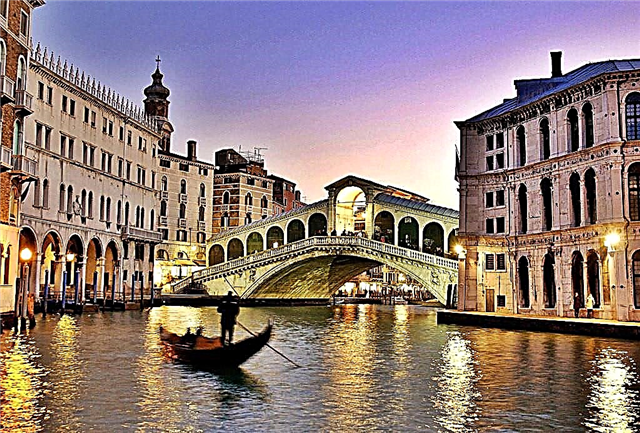Address: Russia, St. Petersburg, Petrodvortsovy district, Peterhof
Start of construction: 1712 year
Opening date: 1723 year
Founder: Peter I
Architect: Jean-Baptiste Leblond
Main attractions: Peterhof Grand Palace, Marly Palace, Monplaisir Palace, Hermitage Pavilion, Samson Fountain and Grand Cascade, Upper Garden, Lower Park
Coordinates: 59 ° 53'03.4 "N 29 ° 54'30.9" E
Cultural heritage site of the Russian Federation
Content:
History
It is located on the southern coast of the Gulf of Finland, 29 km from St. Petersburg. In terms of luxury and scope, Peterhof is not inferior to the French Versailles, and even surpasses it in terms of spectacular fountains.

Peterhof from a bird's eye view
The Tsar's ensemble has 4 cascades and 176 fountains. But even 300 years ago, there was nothing in these places except villages in the swamps. In the 1710s, by decree of Peter I, active landscape and architectural work began here.
The surviving drawings, drawings and notes on documents give grounds to assert that the general concept of the ensemble's planning and the designs of individual fountains belonged to the tsar himself.

Oak fountain against the background of the Grand Palace
In 1723, the grand opening of Peterhof and the launch of the Grand Cascade - the main fountain structure... The residence was named "Peterhof", which means "Petrova's estate" in German.
At the beginning of the 18th century, to the west of the Lower Park, the Big Sloboda, or Old Peterhof, arose, and to the east - the Malaya Sloboda, or New Peterhof.

Samson Fountain and Grand Cascade in front of the Grand Palace
Since Catherine's times, they are separated by the English Park with canals, streams and a pond. Beginning in 1762, the entire palace and park ensemble and the city that grew up around the royal residence began to be called Peterhof.
The architecture of the palace and park ensemble "Peterhof"
Great Peterhof Palace

View of the Grand Palace from the Sea Canal
The compositional center of the entire ensemble is the Great Peterhof Palace (Petrodvorets). The graceful three-storey building, built in the "mature baroque" style, rises on a 16-meter seaside terrace.
The northern palace facade, facing the sea, is especially beautiful. The roof topped with a gilded vase and gilded domes of the outbuildings give the building solemnity and monumentality.

View of the Grand Palace from the Upper Garden
On the pediment, under the imperial crown, there is a shield with the monogram of Peter I. The windows are decorated with stucco frames, and the balconies are decorated with wrought patterned lattices.
The central dome of the “Church building” ends with an Orthodox cross, and the dome of the “Under the Emblem” building is crowned with the traditional symbol of Russia - a golden two-headed eagle with a scepter and a power in its paws.

Palace Church of Peter and Paul of the Grand Palace
In Petrodvorets, there are 30 richly decorated rooms with painted ceilings, wall paintings and ornamental parquet patterns. The Upper Garden and the Lower Park are laid out in front of the palace, and the Grand Cascade with fountains and sculptures serves as the decorative foot of the residence.
Marly Palace

View of the Marly Palace
The white cube house on the banks of the Marlinsky pond is a real treasure of Peterhof. The two-story mansion looks austere and does not in any way remind of royal luxury. Marly is a Russian replica of the eponymous estate of the French king, which won the heart of Peter I during a trip to Paris.
The small palace contains the personal belongings of the Russian emperor, his clothes and the collection of paintings collected by the sovereign. Tourists love the delicate balconies and unique relics - books from the tsar's library, the tsar's sea coat, china and a table made by the sovereign.
Hermitage Pavilion

View of the Hermitage pavilion
Small pavilions were in vogue among European aristocrats, so Peter I wished to build elegant buildings for private relaxation in Peterhof. The construction of the Hermitage began in 1721, and finished after the death of the Russian emperor.
The neat building resembles a toy house. Thanks to the large windows, a lot of light gets into it, and the building becomes light and airy. The floor of the hall on the second floor is covered with inlaid parquet, and the walls are decorated with 124 paintings painted by masters of brush from Western Europe.
Monplaisir Palace

View of the Monplaisir Palace from the Monplaisir Garden
This picturesque architectural monument of the early 18th century emphasizes the beauty of the Lower Park. Peter I personally chose the site for the palace, invented its name and gave instructions to the architects on the layout of chambers and rooms. The emperor wanted the country residence to have not only a huge imposing palace, but also a place for pleasure.
In Monplaisir you can get acquainted with the traditions of the Russian Baroque, see magnificent examples of decorative stucco molding, exquisite paintings and antique furniture. In the halls of the small palace, collections of glass, porcelain, earthenware and paintings of the 17th-18th centuries are exhibited.
Voronikhinsky colonnades

View of the Voronikhinskaya colonnade from the side of the Grand Palace
The suburban residence of Peter the Great looks like a theater, so the architects who built Peterhof decorated the Sea Canal with two paired pavilions. Low-rise buildings with golden domes are reminiscent of theatrical backstage. The Gulf of Finland remains behind the guests, and the long facade of the Great Peterhof Palace opens in front.
The pavilions are a remarkable monument of classicism. Rows of paired columns and white balustrades are framed by the greenery of the Lower Park. In front of the buildings there are flower beds and mowed lawns, and stone lions guard the stairs that lead to the covered galleries.
Upper garden of Peterhof

View of the Upper Garden of Peterhof from the entrance gate
The upper garden, modeled on a French park, has the shape of an elongated rectangle. Its central part is occupied by an open parterre, bordered by avenues of trimmed lime trees... Almost all the sculptural and fountain structures of the Upper Garden are located on islets surrounded on all sides by the water surface of five pools.
These reservoirs serve not only as a decoration, but also as storage tanks for the fountains of the Lower Park. Among all the sights of the Upper Garden, the Neptune fountain stands out. Above the surface of the water, on a high pedestal decorated with shells, wreaths and garlands, rises a bronze figure of the formidable god of the seas with a crown on his head and a trident in his hands.

View of the Upper Garden of Peterhof from the Mezheumny fountain
Below it there are newts, dolphins, mascarons (elements in the form of masks of mythical creatures), water nymphs sitting on hippocampus - sea horses.
In total, the composition "Neptune" has about 40 statues and small details, made with great skill by German sculptors from Nuremberg in the 17th century.
Lower park of Peterhof

View of Roman fountains in the Lower Park of Peterhof
All alleys of the Lower Park either end with a fountain, or are connected to the Gulf of Finland by the Sea Canal. Its layout strictly adheres to the symmetry in relation to the Grand Palace.
The heart of the ensemble is the Monplaisir Palace - the favorite brainchild of the king, where he embodied his vision of the dwelling of an enlightened person. Peter I called it in the French manner "Monplaisir", which means "My pleasure." Within the walls of this building are paintings by European artists and a collection of Chinese porcelain dating from the 17th - 18th centuries. The miniature palace of Marly occupies an important place among the royal buildings. It was originally used as a guest room for noble persons, but was later converted into a repository of personal belongings of Peter I.
Fountains - a water delight

The grand cascade
It was the Lower Park that brought Peterhof the worldwide fame of the "capital of fountains".The Grand Cascade, which is a single composition with the Grand Palace, consists of 64 fountains and 255 bronze statues... In the center of the Grand Cascade stands the Samson fountain, erected in honor of the victory of the Russian troops in the Battle of Poltava. Emitting a powerful jet to a height of 21 meters, "Samson" symbolically demonstrates victory, and the sea deities trumpet their shells, from which fountain streams beat out, as if glorifying the hero who defeated the enemy.
Favorite fun of court ladies and gentlemen were "fountains-jokers". When the guests, heated with fun, sat down on a park bench, the water supply suddenly turned on, spraying the visitors.

Lion's Cascade in the Lower Park of Peterhof
Such fountains are distinguished by an unusual look, for example, the "Dubok" fountain, made in the form of a metal tree, five tulips and two benches. The abundance of gold on the facades of the Grand Palace, the combination of sculptures and murmuring streams, shimmering with all the colors of rainbows - all this creates an atmosphere of jubilation and festive celebration.


